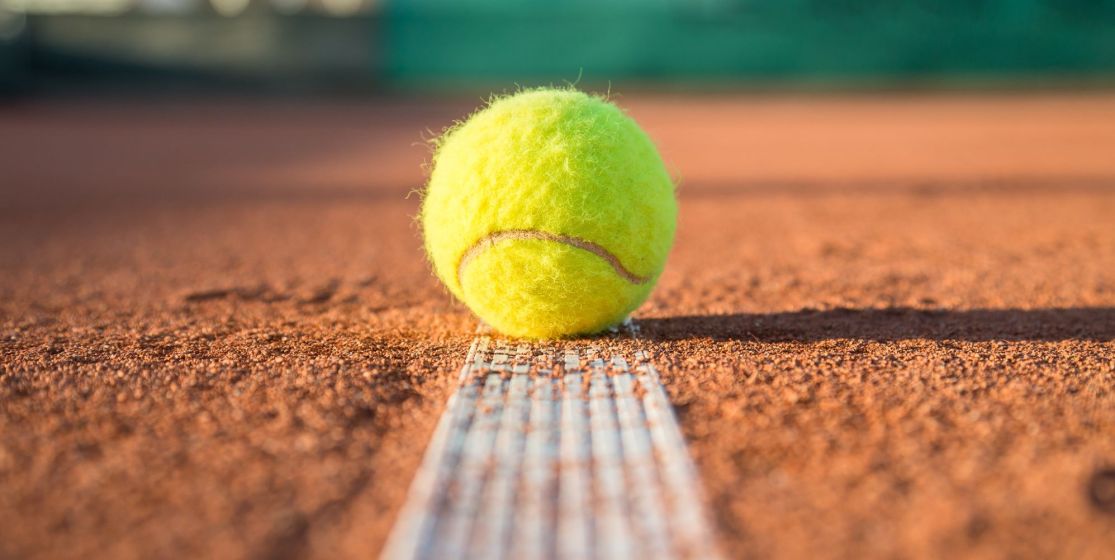The more tics Rafael Nadal has, the more tournaments he wins. Proved surely with his seventh victory at Roland Garros. There must be must be a causal link between pirate pants, a bottle of water and victories in Grand Slams. Diving into the head of the Spaniard.
Sunday, the 10th of June 2012. The Men’s French Open Final. In the first set, Rafa Nadal breaks Novak Djokovic’s serve. The ochre is humid and an unbearable drizzle keeps falling on the Philippe Chatrier court. The public is a little distracted and the umbrellas start to open up. The Spaniard leads 4-3 and is next to serve. Rafa returns to his chair, sits down, puts his towel on his knees, takes a first sip from bottle A and puts it back gently in the same place on the ground, right in front of him. Then he grabs bottle B and takes a second sip. Bottle B then finds its place next to bottle A. You have to be very careful. The bottle must be placed exactly in the same position. Rafa likes the dirt; it's easier to trace his bottles. Then he wipes his left arm with his towel, then his face, then his right arm. His legs are starting to shake again. He springs from his chair before the referee's signal without ever walking on a white line and always passing them with the right foot. At each change of side, Nadal repeats the same ceremony. Has the Spaniard lost his mind?
Rafa’s things
There is also his eight bounces of the ball before serving, the bunny hops before beginning his toss, the socks which have be adjusted at the beginning of each set, the right leg that crosses the left twice before getting back in place on the service return and, of course, the pants to adjust. When this week a journalist asked him a bout his faithful bottles, Rafa got annoyed: "No, it's nothing, just one of the things I do." And that is precisely what interests us. For Nadal's talent is not in his forehand or his fancy footwork. This 26 years old kid has neither the genius of Djokovic, nor Federer's elegance, nor even the punch of Tsonga. Rafa's best shot is his mind. "Rafa is possibly the least gifted technically of the top 3" says Tomas Carbonell, a former Spanish tennis player and now famous commentator in Spain. "Yet it makes up for this shortfall with a great mind-set." Emilio Sanchez Vicario, who played with him in the Davis Cup, is also in admiration of what he has between his ears: "When he plays, Rafa sets himself a target in his head and everything gets organized around it. For this, he has full control of his body language." So these little rituals are rational acts, which have a specific function. Ok, but what?
Might makes right
Tennis is not a game. On the court you must eliminate to survive and exist. Ruben Moreno is a sports psychologist: "Tennis is a very difficult sport because players are subjected to a very strong psychological pressure. A tennis player spends his life alone, in hotels, airplanes and his friends are his rivals." In order not to drown there is only one way. As his uncle Tony told John Carlin: "It's all in the head, in the attitude: to always want more, to be tougher than your rival." Tony Nadal is the world's most famous uncle but may well be a philosopher too. He's the one who turned Rafa into a beast of stamina and competition. In 2008, his knee was leaving him in agonising pain. Tony took Rafa by the horns and said, "Listen, there are two possible paths: either you tell yourself that it's fine that you've had enough and we withdraw. Or you get ready to suffer and you continue. The choice is between giving up and enduring." A few weeks later, he won his first Wimbledon, having chosen the path of endurance. Nadal won on grass against the master Federer. Not too shabby for a one-legged man.
Focus and self-control
To last or to endure, it's the same thing. During a game, the body suffers but the head is the main danger. And here it's the psychiatrist who's speaking: "A tennis player must maintain a high level of focus for a very long time. Rhythm's changes, the points follow one another, what happens on the court, around the court are things that may disturb the focus“. Therefore, to maintain mental freshness, Rafa need rituals: "What he does with his bottles, for example, it’s a way to maintain his focus and his self-control during the change of sides. Many players have no such whims and tend to think of the game they just lost, of the break they just won, in short, all this diverts their attention. The result is that the changes of side don’t actually rest them, it distracts them." Bottles, pants, socks, lines, that's the secret of Nadal. Not to think, not to suffer. But it’s easier said than done.
A fantastic return (of repression)
"Rafa is a player who has very short tennis memory," explains the commentator Carbonnel. “He plays each point individually. When he finishes the rally, he only thinks of the next, regardless of what happened." This form of self-storytelling maintains his mental freshness. Each point has its own existence. Repress, so as not to suffer. Emilio Sanchez Vicario, the former Spanish Davis Cup captain said: "I would not say that he forgets consistently but rather that he remembers only the points that he won. Indeed, at the end of a match, he has an unbelievable analysis. He is someone who reads matches very well and who is able to recount every point." Rafa wins the points first, then games, then sets, then matches, then tournaments, then Grand Slams. At the end of the day, tennis is quite simple really.
Thibaud Leplat






